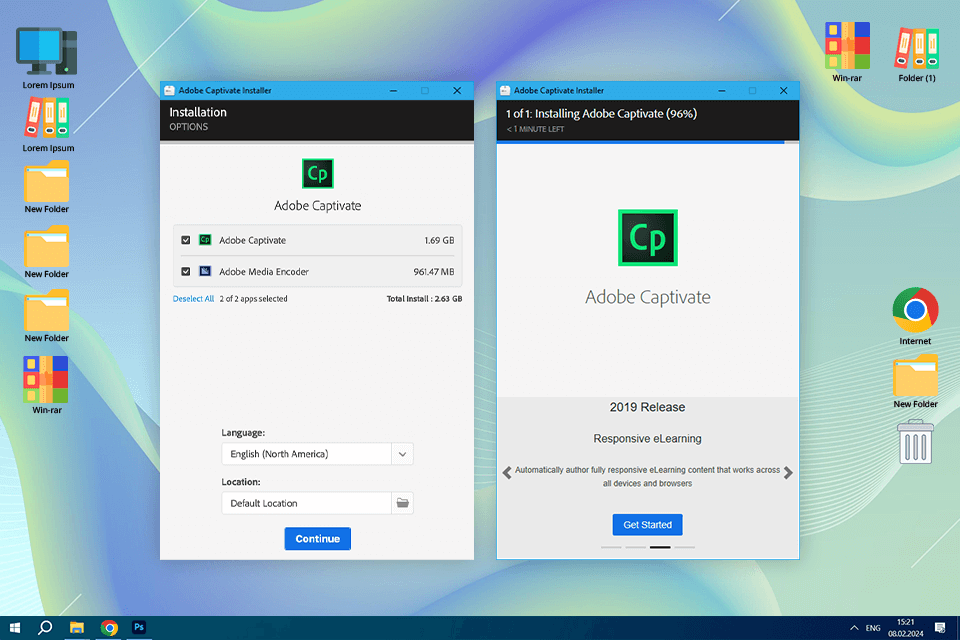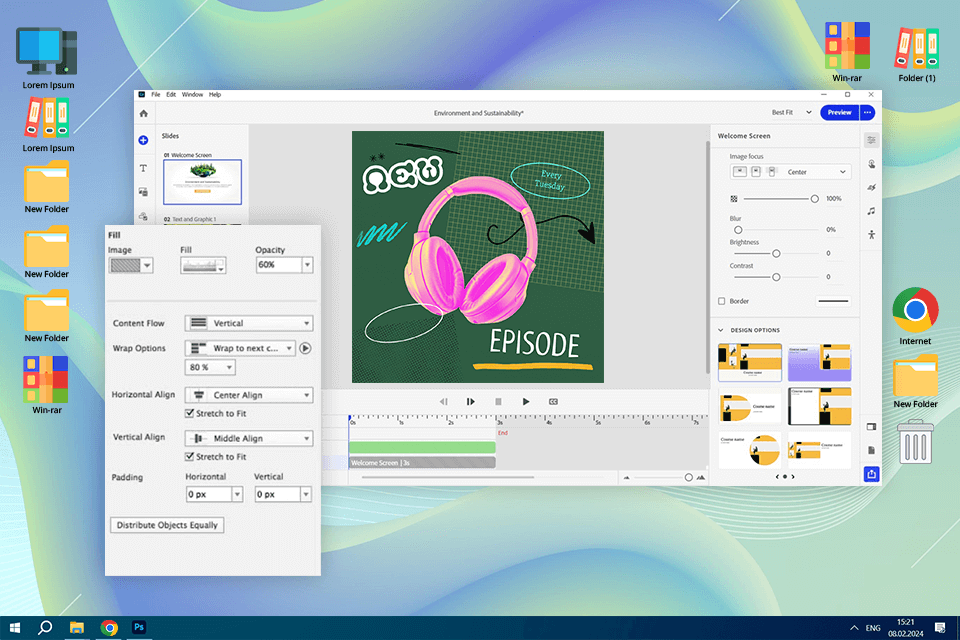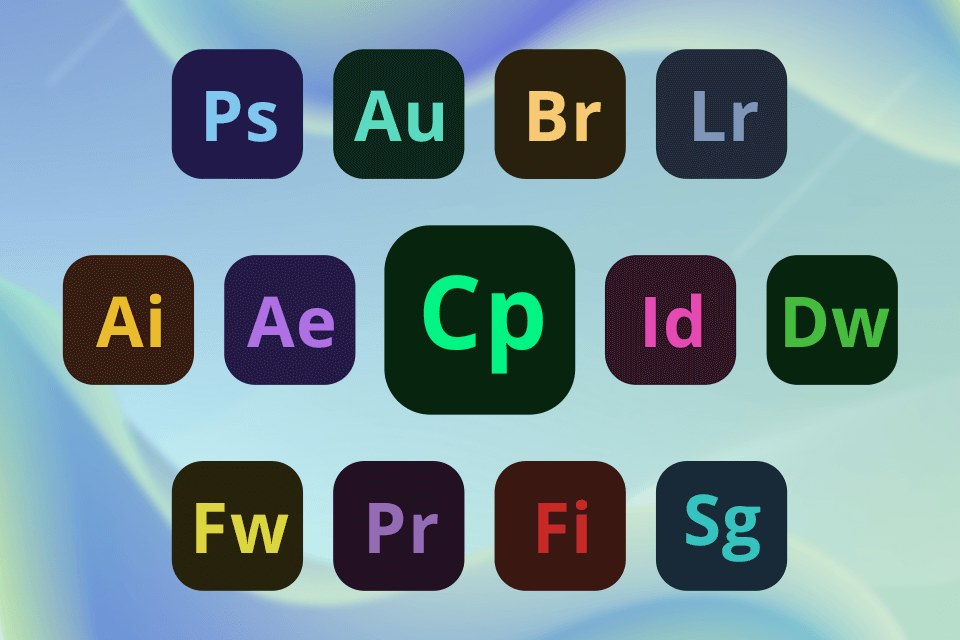
The latest Adobe Captivate takes eLearning development to the next level by improving the responsive workflows, enhancing VR and 360° features, and introducing a sleek, modern interface. With AI-driven tools and faster rendering times, it’s a standout upgrade from previous versions.
I spent a lot of time using the earlier version of Adobe Captivate. It was a powerful tool, but some tasks felt slow and cumbersome, especially with large projects or responsive designs. The new version changes that. It offers a smoother workflow, a refreshed interface, and useful new features that were missing before.
|
File name:
|
adobe_captivate_full-latest.exe (download)
|
|
File size:
|
50MB
|
|
File name:
|
adobe_captivate_windows-11.exe (download)
|
|
File size:
|
56MB
|
|
File name:
|
adobe_captivate_mac.exe (download)
|
|
File size:
|
54MB |
|
File name:
|
adobe_captivate_2017.exe (download)
|
|
File size:
|
48MB
|
|
File name:
|
adobe_captivate_2019.exe (download)
|
|
File size:
|
53MB
|
|
File name:
|
adobe_captivate_8.exe (download)
|
|
File size:
|
49MB
|
|
File name:
|
adobe_captivate_9.exe (download)
|
|
File size:
|
55MB
|
✔️ Immersive learning capabilities. Adobe Captivate for Mac and Windows stands out among other alternatives with its ability to create engaging, immersive learning experiences. The addition of 360° media and virtual reality (VR) support opens up new possibilities for interactive learning.
For example, I designed a VR training module for healthcare professionals. In it, learners could practice emergency response scenarios in a simulated hospital room. This kind of immersive content is invaluable, especially for industries that rely on hands-on, situational training.

✔️ AI-driven features. One of the greatest features of this eLearning software is the AI-fueled quizzes generation. When I needed to create assessment questions for my course, I managed to do this quickly and easily. The smart branching feature customized the course flow in real-time based on user answers, providing a more personalized and interactive learning journey.
✔️ Advanced interactivity options. Captivate 9 provides a range of tools, including drag-and-drop functionality, animations, and interactive scenarios, to create engaging and immersive learning experiences.
For instance, I developed a product training module for sales teams that allowed learners to interact with product features by dragging components into place, simulating real-world usage. The feedback system enhanced the learning experience by providing real-time guidance and support, keeping learners engaged as they advanced through the course.
✔️ Seamless integration with Adobe ecosystem. Having worked with multiple Adobe software like Photoshop, Illustrator, and After Effects, I enjoyed a seamless integration with Captivate. For example, I easily added visuals edited in Photoshop to my eLearning modules, keeping the design consistent and professional.
❌ Steep learning curve. The improved interface makes Captivate easier to use, but new users might still face challenges while trying out its functionality. For instance, creating complex branching scenarios wasn’t straightforward. Even with my experience, it took some trial and error to figure out the advanced VR features.
❌ Resource-intensive software. The official Adobe Captivate full version has high system requirements, so its performance is poor on older PCs. When testing a VR module with 360° images and interactive hotspots, I noticed longer rendering times on a mid-range laptop. This delay could be frustrating for users who don’t have access to more powerful hardware, as it impacts both speed and overall usability.
Through extensive testing of Adobe Captivate, I pinpointed several areas where improvements could make a significant difference in the user experience.

If your budget is restricted and you cannot afford the licensed Adobe Captivate, we recommend trying out the trial version or using one of the Adobe Captivate alternatives with similar functionality instead of risking your security with unofficial Adobe Captivate 2017 or 2019. The alternatives listed here are available for free or with a free trial.
iSpring Suite and Adobe Captivate are both highly functional eLearning tools for developing interactive courses, presentations, quizzes, and content compatible with LMS. iSpring Suite is known for its user-friendly interface and smooth integration with PowerPoint, making it perfect for quick course creation.
The courses built on this online learning platform are optimized for mobile and work across various devices. On the other hand, Adobe Captivate provides more advanced customization options, VR support, and a wider array of design features, but it is more complicated to learn. Both programs come with free trial versions.
Both Articulate vs Adobe Captivate are powerful tools for creating interactive eLearning content. They support SCORM/xAPI standards and enable multimedia integration, making courses more engaging.
Articulate 360 is known for its user-friendly UI and powerful tools like Storyline and Rise, which make the creation of interactive, responsive content a breeze. Its cloud-based collaboration is ideal for real-time teamwork. Adobe Captivate, while more complex, excels in advanced customization, offering greater design flexibility. Both platforms offer free trial periods to help users find the best fit.
360Learning simplifies course distribution and tracking with its built-in learning management system (LMS). Like Adobe Captivate, it offers a wide range of tools for creating interactive content, including quizzes, discussions, and multimedia elements.
Additionally, courses are accessible from anywhere without requiring extra software installation. However, Adobe Captivate stands out with its more versatile authoring tools and broader customization options for branding and course design.
Adobe Captivate and Elucidat both support the creation of responsive, interactive content. Captivate is a desktop-based tool with a complex toolkit for advanced users. Elucidat, on the other hand, is a cloud-based solution with a more straightforward drag-and-drop interface. Collaboration is where Elucidat truly stands out. It allows teams to work on projects simultaneously. Captivate, however, is more focused on individual creators.
Adobe Captivate and ActivePresenter are versatile tools with features like interactive assessments, simulations, and adaptable layouts. Both platforms support SCORM and xAPI, ensuring smooth integration with learning management systems. Captivate caters to experienced users seeking advanced functionalities, while ActivePresenter is designed with beginners and small teams in mind. Although both offer desktop recording, ActivePresenter is better at capturing screens and editing videos.